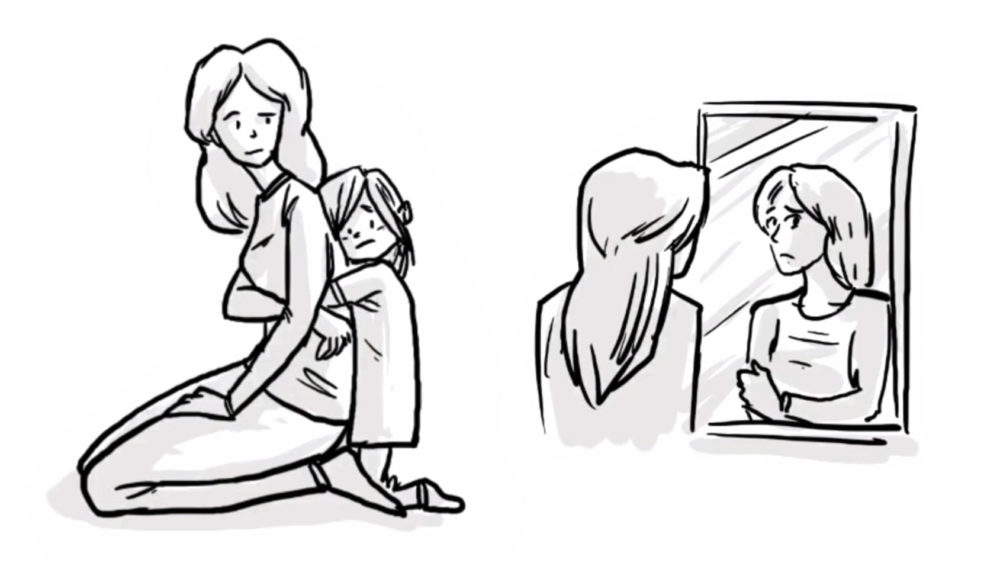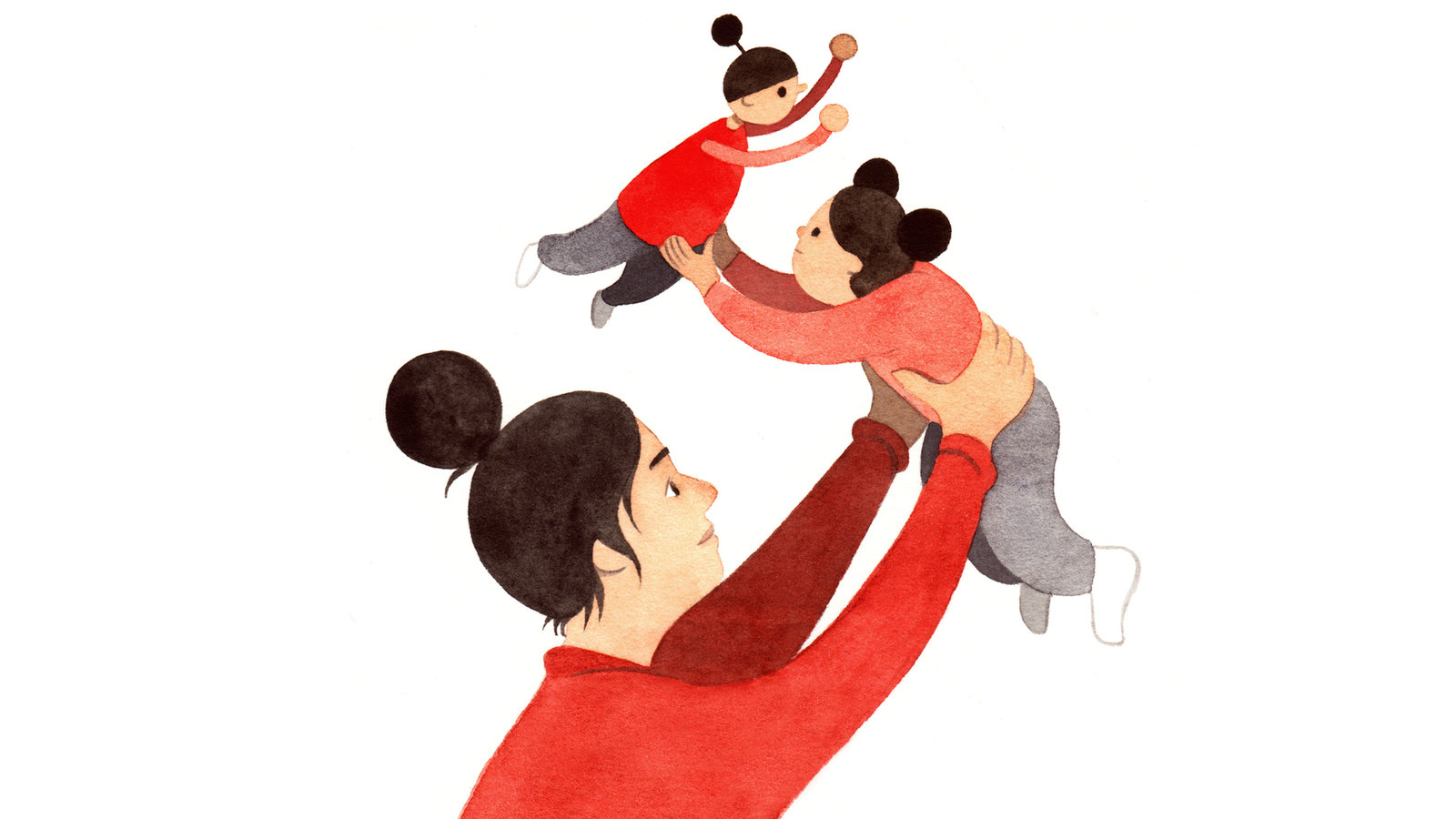An attachment theory is a psychological or emotional phenomenon that is focused on the relationships and bonds between people, particularly long-term relationships, including those between a parent and child and between romantic partners or friendships in general. Additionally, attachment theory psychology can be defined as a theory that every human is born with. When we are born, the attachment style starts forming. Generally, it is a close emotional bond with people. The psychologist John Bowlby explained everything in this popular theory, which you’ll find in this text.
AINSWORTH ATTACHMENT THEORY
Ainsworth (1970) identified three main attachment styles: secure (type B), insecure-avoidant (type A), and insecure ambivalent/resistant (type C). In her attachment theory, she concluded that these attachment styles were the result of early interactions with the mother. However, she only discovered three attachment theories. However, a fourth attachment theory, known as disorganized, was later discovered by Main & Solomon, 1990.
TYPES OF ATTACHMENT THEORIES
Generally, we have four attachment theories/ patterns. They are;

#1. Ambivalent or anxious attachment:
Generally, children with an ambivalent attachment pattern are easily distraught when a parent leaves. However, an ambivalent attachment style is considered uncommon. Because it only affects 7–15% of U.S. children. However, this particular attachment pattern starts to develop when there is little or no parental attention or availability.
#2. Avoidant attachment:
An avoidant attachment is developed when parents or guardians avoid their kids. Basically, this attachment theory is quite common. It is often a result of abuse or neglect. When children are constantly punished for seeking help or relying on their parents, they eventually learn to avoid seeking help in the future.
#3. Disorganized attachment:
Kids with a disorganized attachment theory basically display a confusing mix of behavior. But they are mostly disoriented and overwhelmed. And subsequently, they may avoid or resist the parent. In addition, the “parent figure” they know would be their constant source of comfort and fear, leading to disorganized behavior.
#4. Secure attachment:
This is by far the healthiest, though. Children who can depend on their parents show distress when separated and joy when reunited. Although the child may be upset, they feel assured that their parents will return. When frightened and securely attached, children are comfortable seeking reassurance from parents.
BOWLBY’S ATTACHMENT THEORY
John Bowlby believes that the first bonds formed are in childhood. It is concluded to have a tremendous impact on what happens in the rest of our lives. He strongly believes that attachments are an evolutionary process. Basically, Bowlby and others proposed that children are born with an innate drive to form attachments with caregivers. Throughout history, children who maintained proximity to an attachment figure were more likely to receive comfort and protection. Therefore, they are more likely to survive to adulthood.
BOWLBY ATTACHMENT THEORY STAGES
Generally, there are four stages/ phases that Bowlby stated in his attachment theory these are;
Phase 1: Birth to 3 Months:
Babies tend to look at the human face and listen to human voices in the first stage after birth. Basically, around 6 weeks, the sight of human faces will elicit social smiles, in which babies will happily smile and make eye contact. Bowlby also suggested that social smiling increases the chances that the caretaker will respond with loving attention, promoting attachment.
Phase 2: From 3 to 6 Months:
When infants are about 3 months old, they start to differentiate between people and begin to reserve their attachment behaviors for the people they prefer. Babies’ preferences are restricted to two to three individuals and usually favor one person. But here’s the catch. However, the baby’s attachment is now more defined. However, their preference could be anyone they have successfully responded to, not just a parent.

Phase 3: From 6 Months to 3 Years:
Generally, you’d notice that most babies at this stage suffer from separation anxiety. What is separation anxiety, though? After the babies get attached, they feel scared or abandoned when the person leaves the room. However, they often grow out of this. Additionally, when the baby is about a year old, he develops a working model of his favored individual and sticks to them.
Phase 4: From 3 Years Until Childhood Ends:
Bowlby didn’t have as much to say about the fourth stage of attachment, though, or how attachments continued to impact people after childhood. Then, the children begin to form strong emotional bonds with other caregivers beyond the primary attachment figure.
FACTORS THAT CAN INFLUENCE ATTACHMENT THEORIES
Although it might seem like a no-brainer. However, there are some specific factors that can influence the type of attachment we develop. They are;
1. Opportunity for attachment
2. Quality caregiving
ATTACHMENT THEORY IN ADULTS
Generally, the way you bond with others is known as your attachment style. When we have a strong connection with another adult, our adult attachment style is the way we feel about them and how we express those feelings. Then how do we feel comfortable with them? And how confident are we in the relationship? How much affection do we feel for them? How, then, do we trust them? Do we think they’ll be there for us when we need them? The answers to these questions tell us not whether we have an attachment to them but what kind of attachment we have. We tend to form similar attachments throughout our lives, but sometimes, our attachment styles can cause distress in our relationships. Also, if your attachment style is holding you back in life or making you unhappy, you can see a mental professional.
A. Avoidant Adults:
– Are emotionally distant
– Can’t express their feeling
– Avoid conflict, generally violence
– Display passive-aggressive behavior
B. Ambivalent Adults:
– Are control freaks
– Always sabotages others to get what they want
– Are uncomfortable with closeness
C. Disorganized Adults:
– Can be selfish
– Generally fear intimacy
– Basically disobey rules
– Are prone to substance abuse

ATTACHMENT THEORY OF LOVE
Basically, an attachment theory of love proposes that the type of romantic relationship one has as an adult is determined by the type of relationship one has with one’s guardian as a child.
ATTACHMENT THEORY TEST
This test will help you identify your attachment pattern through the easy questions. Basically, it would help you conclude if you are secure, ambivalent, disorganized, or avoidant.
A. How do you perceive the following conditions were met by your parents in your early childhood?
1. Kept me safe from danger and threats. I felt safe when I was with them.
a. Yes
b. No
2. I was emotionally in tune with how I felt while growing up.
a. Yes
b. No
3. Calmed, soothed, and effectively reassured me when I became distressed, upset, or overwhelmed.
a. Yes
b. No
4. Took genuine interest in me and expressed delight in who I was. Basically, I felt special and valued by them.
a. Yes
b. No
5. Without a doubt, it encourages exploration and discovery and helps me find and express my natural interests and talents.
a. Yes
b. No
6. Provided me with sufficient food, housing, and medical care when needed.
a. Yes
b. No
7. They were physically around while I was growing up.
a. Yes
b. No
8. Gave me things I wanted (like toys, bicycles, certain clothes, computers, etc.).
a. Yes
b. No
9. Took me to activities (like music lessons, sports teams, camp, etc.) and/or to visit friends.
a. Yes
b. No
B. If your mum/dad has passed away, we would like for you to answer these questions with respect to how you felt when they were alive.
1. Generally, I feel comfortable opening up to them.
a. Yes
b. No
2. I usually discuss my problems and concerns with them.
a. Yes
b. No
3. I’m not afraid that they’d leave me.
a. Yes
b. No
4. I talk things over with them easily.
a. Yes
b. No
5. It helps to turn to them in times of need, though.
a. Yes
b. No
6. Basically, I find it easy to depend on them.
a. Yes
b. No
7. I like to show them my feelings when I feel deep down.
a. Yes
b. No
C. Please answer these questions with respect to how you generally felt in your relationships.
1. I now discuss my problems and concerns with this person.
a. Yes
b. No
2. I’m not afraid that this person may leave me.
a. Yes
b. No
3. Basically, I find it easy to depend on this person.
a. Yes
b. No
4. It helps to turn to this person in times of need, though.
a. Yes
b. No
5. Naturally, talking things over with this person is easy.
a. Yes
b. No
6. I often worry that this person doesn’t really care for me
a. Yes
b. No
7. I prefer to show this person how I feel deep down.
a. Yes
b. No
8. I don’t feel comfortable opening up to this person.
a. Yes
b. No
In conclusion, if most of your answers are “yes,” then you definitely have a very secure attachment style/ theory, and if most or all of your answers are “no,” then you have an insecure attachment style/ theory or pattern. Ok, now you suspect you have an insecure attachment style. Well, through the context of this article and the questions as well, you’d be able to fully know if you are anxious, disorganized, or avoidant. Personally, though, my attachment style is dismissive-avoidant. But there are a lot of ways I deal with it to make it more secure and healthy.
Read also: Insecure Attachment Style: How to Cope & Deal With It, Updated!!!
Is attachment theory a cognitive theory?
Attachment theories and Cognitive Motivational Structure are almost synonymous in many regards. But they differ primarily in their proposal of when and how they develop in the individual’s life
What are the strengths of attachment theory?
It often helps to support someone or a child in need. Generally, a person who has an attachment to another person develops more confidence and stability. So, in my book, it’s a strength.



